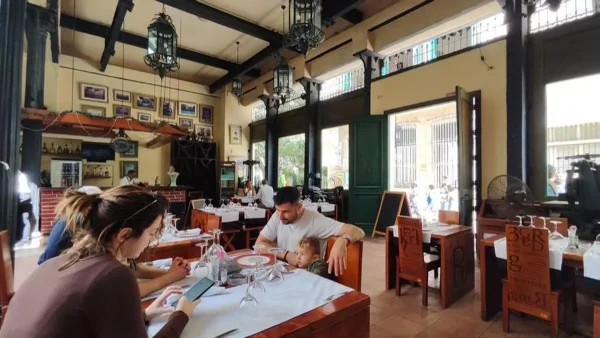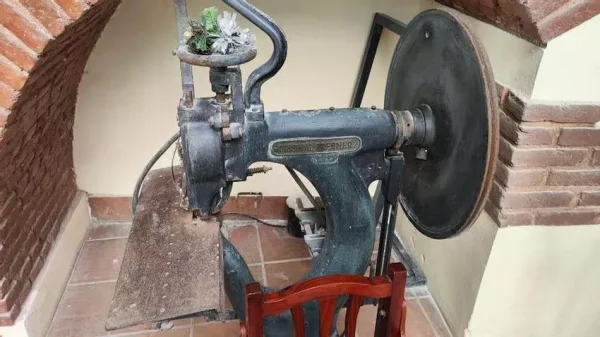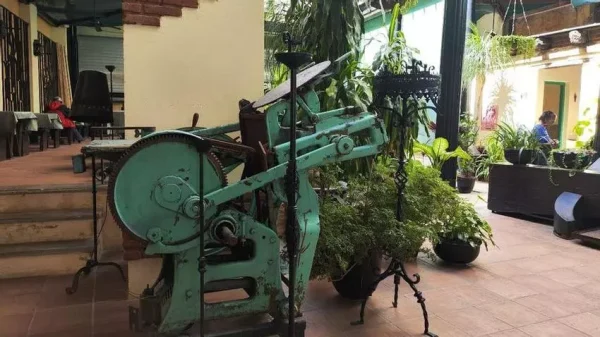Cuba: They Tell Tourists “Lobster and Bread Are ‘Affected’
Which translates to: ‘We Don’t Have Any’

Por Juan Diego Rodríguez (14ymedio)
HAVANA TIMES – Old newspaper presses, paper cutters, cast iron poles and typographical motifs on the walls in the La Imprenta (The Printing Press) restaurant located at Mercaderes 208 in Old Havana, show the stamp of the late Eusebio Leal. The Historian of the City did not spare any expense to turn a demolished 19th century workshop into a place that, at the height of his career, strived to emulate the Floridita and the Bodeguita del Medio.
The waitresses still have the same delicacy with foreign clients that Leal demanded, and they now use a resounding euphemism: lobster and bread are not lacking but are “affected”. Although aimed at tourism, La Imprenta suffers from the same shortcomings as other state-managed premises, and diners soon realize it.
The smartest take a quick look at the menu by the door, and, before it’s too late, make a decision. “Are you going?” one of the employees asks an Italian tourist who disappeared up Mercaderes.

Those who stayed for lunch this Wednesday can order a glass of juice stuffed with ice, a tuna tower with vegetables and some dishes that the habaneros have started calling “gourmet,” not because of their quality but because of their small size. The chairs of La Imprenta have different type faces on the back and the names – such as Bodoni or Garamond – of their inventors.
The tablecloths have patches,” noted a Cuban diner, avoiding resting his elbows on the stains of the fabric. A group of Canadians occupied a table near the window and asked for some starters. The waitress brought flakes of discolored ham and cheese, but they were denied the bread. “It’s ‘affected’,” she said.
Other dishes began to parade around the table. Potato puree with sweet potato flavor, yellow rice with a kind of ham and very little salt, a minimum portion of ropa vieja*, fish. “Any wine?” the Canadians ask. With pedagogy and some English, the waitress explains: “In Cuba there are no wines; the ones we have are Spanish.”

At the end of the meal, they wait for the dessert, fried ice cream. “The ice cream is delayed,” the employee warns once again, “and the fryer does not want to fry. It’s done working.” Canadians, of course, look at each other without understanding. “The bill, mi amor?” says the waitress, concluding the banquet.
The total is more than 5,000 pesos and brings a new dilemma. As soon as one of the diners draws a colorful Canadian bill from his wallet, the waitress grimaces and calls her boss. “Only euros or green [U.S. dollars]; we can’t accept Canadian dollars,” he explains. Resigned, the customers pay in Cuban pesos.
In a hurry to leave, those who eat lunch almost never notice La Imprenta’s machines. Artifacts from the beginning of the twentieth century, the restored presses of the Oswego and Brehmen brands pay tribute to a craft that now belongs to another era, and whose mythology Leal hoped to translate into foreign currency.
In 2010, the Historian’s Office mobilized a team of architects, joiners, blacksmiths and artists to remodel the old printing establishment, La Habanera, active from the 19th century until the triumph of Fidel Castro in 1959. The painter Juan Carlos Botello and his assistant Yailín Pérez Zamora were in charge of creating an immense mural on the main wall of the restaurant, and two lieutenants from Leal’s investment department – Loreta Alemañy and Yaumara Fernández – gave the go-ahead to the project.
Professional cooks and baristas were also hired to create a “thematic and emblematic” cocktail, in the style of the mojito or the daiquiri, that would characterize La Imprenta and make it internationally famous. To this day, the restaurant with the “affected” products has not found its brand or a particular flavor, and the Historian who created it no longer roams the streets of Havana.
*Translator’s note: Ropa vieja means “old clothes” but the dish is shredded beef.
Translated by Regina Ananvy for Translating Cuba






5000 pesos divided by 300 pesos to the dollar equals $17 for the entire meal: cheap but inedible.
This is from a poster here on Havana Times regarding the “accuracy “ of a holiday experience recently:
“February 27, 2024 at 4:23 pm
Not only no bread but I was in Varadero for 10 days in Dec and we had bread twice at our resort, eggs only for one day powdered eggs the rest of the which was terrible.
No napkins we went from folded paper towels to three pieces of toilet paper on our table.
Ran out of coffee please tell me how you can run out coffee you grow it!!!!! Soft drinks were occasionally available, very little meat . I have been going to Cuba twice a year for over 30 years have
never seen it like this not going back anytime too soon.”
Even in Varadero the genuine jewel for the Cuban tourism industry, at least from this persons experience, things are in fact bleak.
I am not so sure that these comments are entirely accurate – please comment if I am incorrect !
“Although aimed at tourism, La Imprenta suffers from the same shortcomings as other state-managed premises, and diners soon realize it.”
The key words in this restaurant with shortcomings are “ state-managed premises”. That says it all. In state operated anything in Cuba the tourists will receive exactly what the state has and that is very, very little.
Had the Canadian tourists gone to a privately operated Cuban restaurant the service and food are entirely different. For example, take a cold refreshing beer. In a privately operated restaurant where the owner knows something about what tourists like the restaurant no doubt stocks the American beer “ Budweiser” on tap. A private restaurant entrepreneur can import American or Canadian or any type of beer he feels his/her customers want. Not so in a state operated restaurant. American beer is not available in government operated establishments.
As the waitress told the Canadian who asked “Any wine”? The response from the apologizing Cuban waitress was: “In Cuba there are no wines; the ones we have are Spanish.” And that is all – take it or leave it. Go to any privately well respect Cuban operated restaurant and there is a selection of wines.
If the objective and interest of the Canadian tourists are to view “Old newspaper presses, paper cutters, cast iron poles and typographical motifs on the walls in the La Imprenta (The Printing Press) restaurant located at Mercaderes 208 in Old Havana” while having a quick bite to eat – great.
However, if the objective is to have a decent meal in a Cuban restaurant enjoying at least a modicum of appetizing food and drinks, best to stay away from state operated restaurants and indulge in a private operated restaurant where the service is better, the food abundant, and accompanying drinks familiar to tourists. Of course, the cost is higher as the restaurant entrepreneur must import all his inputs. The Cuban entrepreneur knows full well that to have repeat customers and to make a name for him/herself professional service and quality food is an absolute necessity.
Unlike the state operated restaurant where the paying tourists get this: “Other dishes began to parade around the table. Potato puree with sweet potato flavor, yellow rice with a kind of ham and very little salt, a minimum portion of ropa vieja*, fish.” Yummy yum yum.
But the meal only cost 5,000 Cuban pesos which in Canadian dollars is not much. The old adage: You get what you pay for. In the end, the Canadian tourists soon realized that.